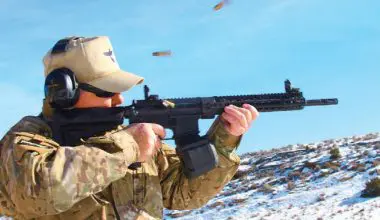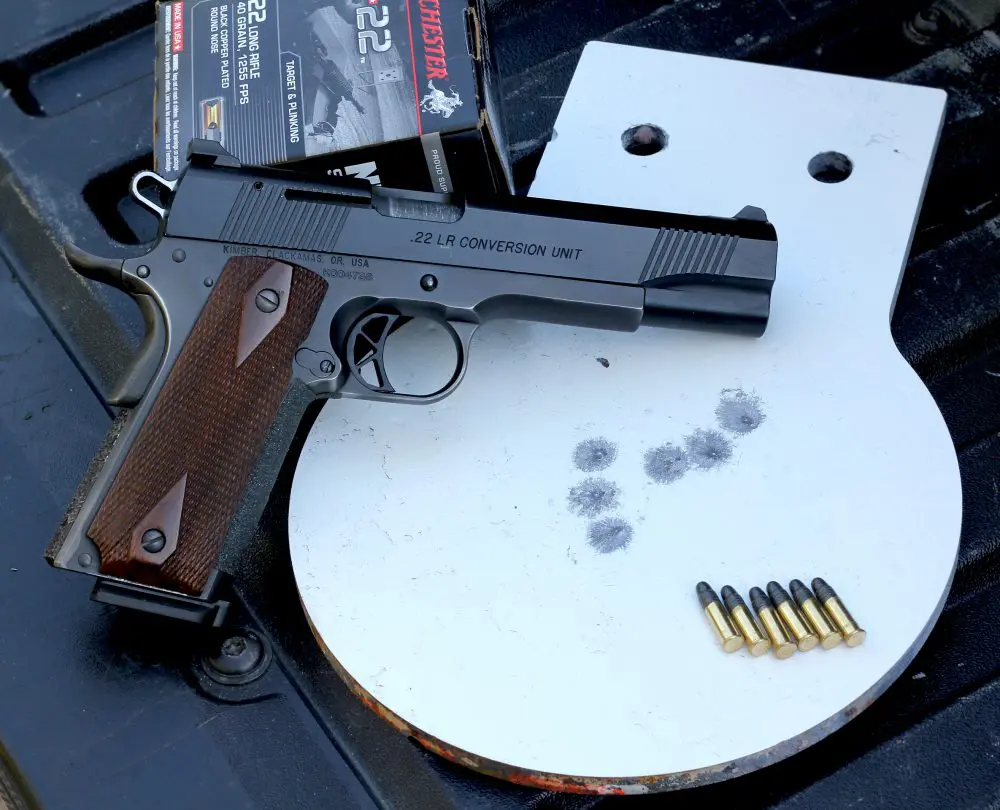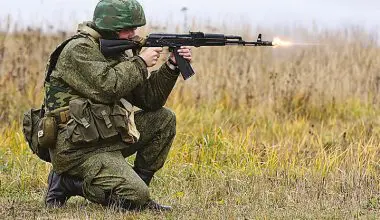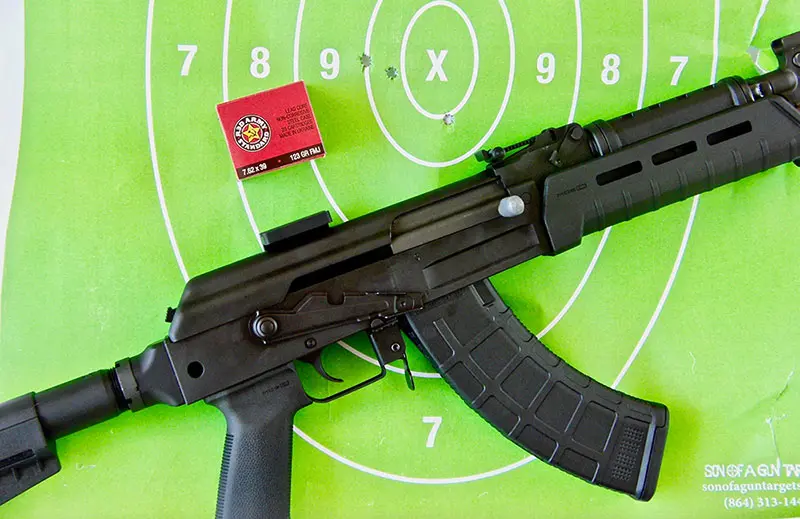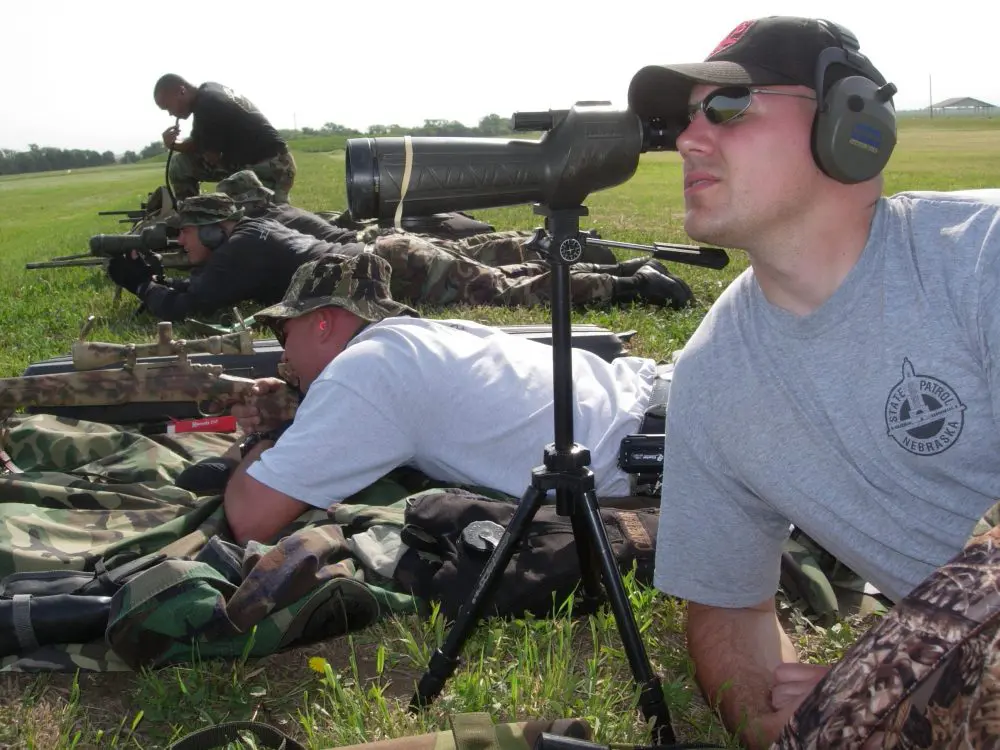MY first AK-47 was a Polytech Legend, and it’s still the one I shoot most often. I acquired it in the days when to shoot a 7.62x39mm rifle, you almost had to shoot corrosive ammunition. I say “almost” because there were a few options loaded by U.S. or European ammunition manufacturers that were non-corrosive, but they were hard to find and expensive.
It wasn’t really a major issue. I knew how to clean the rifle using boiling water followed by World War II GI bore solvent.
One thing that the corrosive ammo did provide was a lot of shooting. It was inexpensive, and I was lazy enough that if I had to perform the cleaning procedure, I normally shot the rifle quite a bit when I took it out. Of course, the Legend has a chromed bore—almost a necessity when shooting corrosive ammo.
As 7.62x39mm rifles become much more common in the U.S., “non-corrosive” ammunition was imported from former Warsaw Pact and other countries. Note my quotation marks, as some of that ammo was not as “non-corrosive” as claimed. When I started using some of the imports, I still cleaned with GI bore cleaner and usually boiling water.
From talking with others, perusing the Internet, and practical experience, I learned which of the import ammo really was non-corrosive and bought it in bulk to keep cost per round in the 10- to 15-cent range.
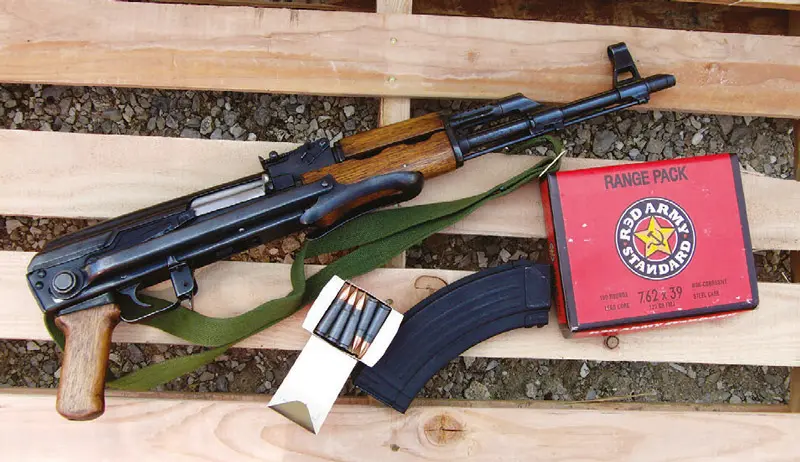
The ammo was steel cased, which was not an issue with guns chambered for the 7.62x39mm ammo, as the extractors were normally designed for steel-case ammo and firing pins were designed for heavy primers.
When some of the same companies started loading .223/5.56x45mm ammo in steel cases, I normally did not use it, as most AR extractors were not designed for steel-cased ammo. I had friends who used a lot of this ammo— which was definitely cheaper—and had little trouble with it, but they usually carried a spare extractor in their kit.
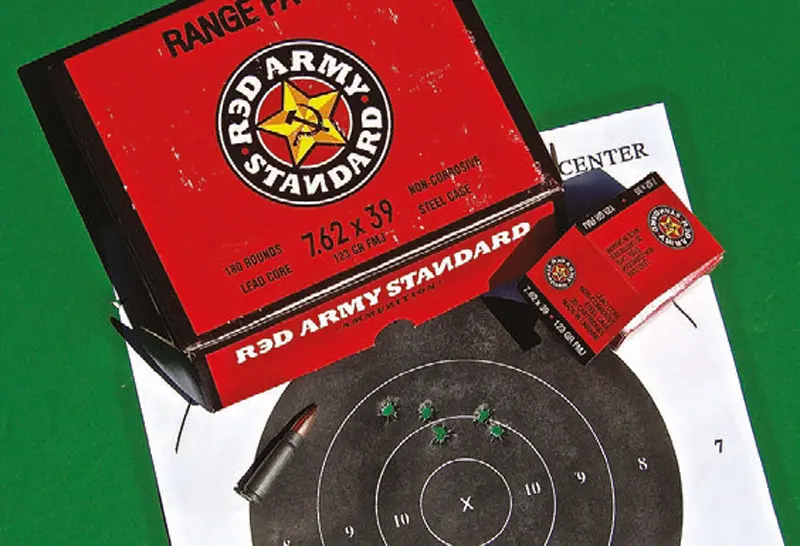
Accuracy was not always great with a lot of the imported military-grade 7.62x39mm either. If I shot a five-shot 100-yard group of four inches, I was normally happy.
That’s how my 7.62x39mm shooting stood at the point when I acquired a SIG556R chambered for the 7.62x39mm cartridge. I put a Leupold Mark AR 3-9X40mm scope on the Picatinny rail and was ready to see how well I could do with a 7.62x39mm SIG rifle—experience has shown me that SIG rifles normally shoot well.
About the same time, I had gotten in some Century International Arms Red Army Standard 7.62x39mm ammo to try, so I tested it along with the 556R.
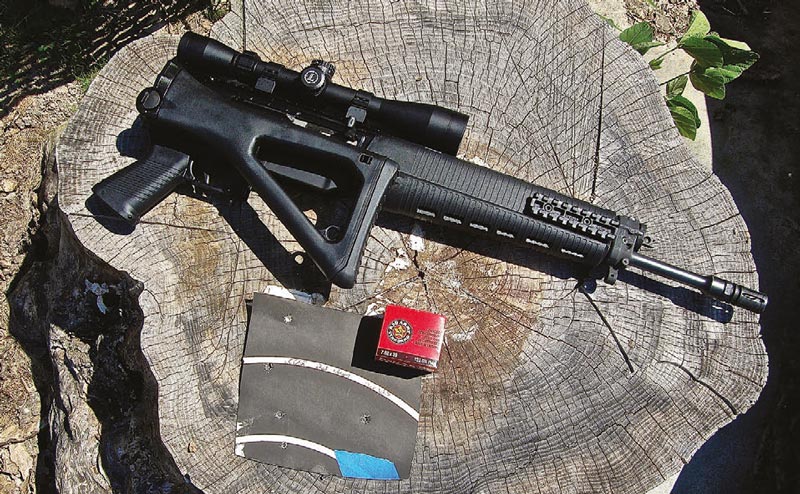
I liked the Red Army Standard Ammo’s appearance from the beginning. It comes in nicely marked red boxes packed in 180-round Range Packs. I’ve found the 180-round Range Packs just right for a day of shooting. One suffices for six 30-round magazines.
The ammo is nice and clean and looks as if it underwent good quality control. Red Army Standard 7.62x39mm ammo is being manufactured in both Russia and Bosnia.
Ammo produced in Russia is packed in 20-round boxes, nine boxes (180 rounds) to a Range Pack and 900 rounds to a case. Bosnian ammo is packed in 30-round boxes, six boxes to a Range Pack (180 rounds) and 1,080 rounds to a case. Also available for the Russian-made Red Army Standard is a 640-round sealed tin.
Russian Red Army Standard 7.62x39mm uses a 122-grain FMJ bullet with lead core in a polymer-coated steel case, while Bosnian uses a 123-grain FMJ bullet. The primer is non-corrosive Berdan. The polymer-coated cases have extracted well with the 500-600 rounds I’ve fired.
As I mentioned, I wanted to try the Red Army Standard Ammo in my SIG556R, as I believed it would be the most accurate 7.62x39mm rifle I own. My better five-shot groups with the Red Army Standard 122-grain FMJ load at 100 yards have been around or a bit over two inches. At 200 yards, the two MOA groups have held consistent, running about four to five inches.
I have also shot the ammo in my Polytech Legend and a Norinco underfolder. I don’t do all that well with AK sights, but I did as well with the Red Army as with any other ammo I’ve fired through my AKs.
My use of the Red Army ammo has been spread over a couple of months, but I don’t remember any feeding or extraction problems. And when I’ve cleaned the rifles, the Red Army Standard ammo shoots cleanly.
I only have a couple of Range Packs left, so I need to get off an order for more of the 7.62x39mm loads.
Ammo is expensive these days, but the Red Army Standard is less expensive than some other brands. I did a quick Internet check, and a 180-round Range Pack sells for about 36 cents a round. That’s a long way from the days when we could buy 7.62x39mm for 10 cents a round or less, but as prices go today, it’s not bad. Plus I’m quite satisfied with the ammo.
Century also offers Red Army Standard in other calibers, including 7.62x25mm Tokarev, 7.62x54R, 9x18mm Makarov, and 5.45x39mm. All are Berdan-primed with steel cases, except the 9x18mm Makarov ammo, which is made in Poland and has a Boxer- primed brass case.
